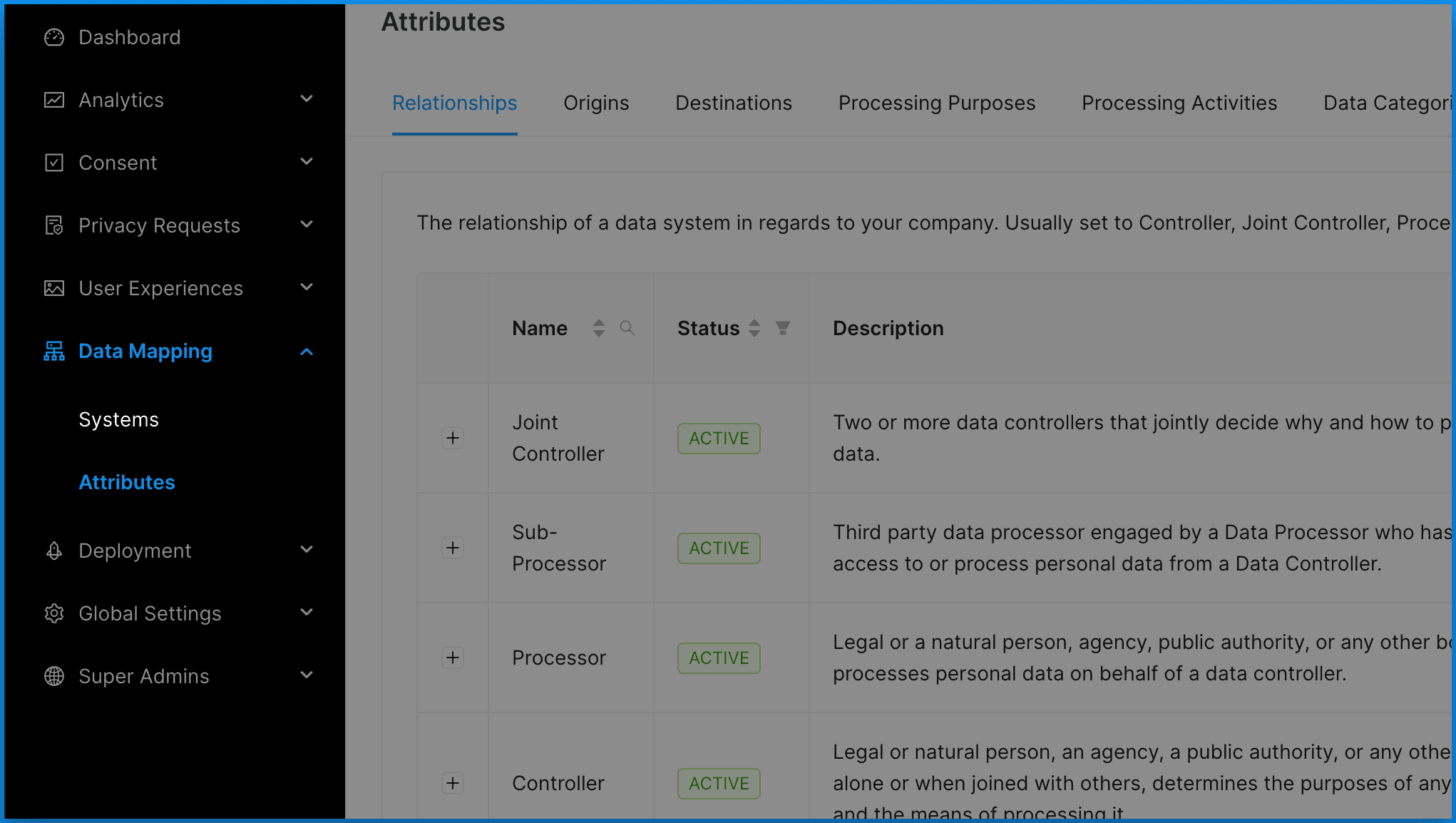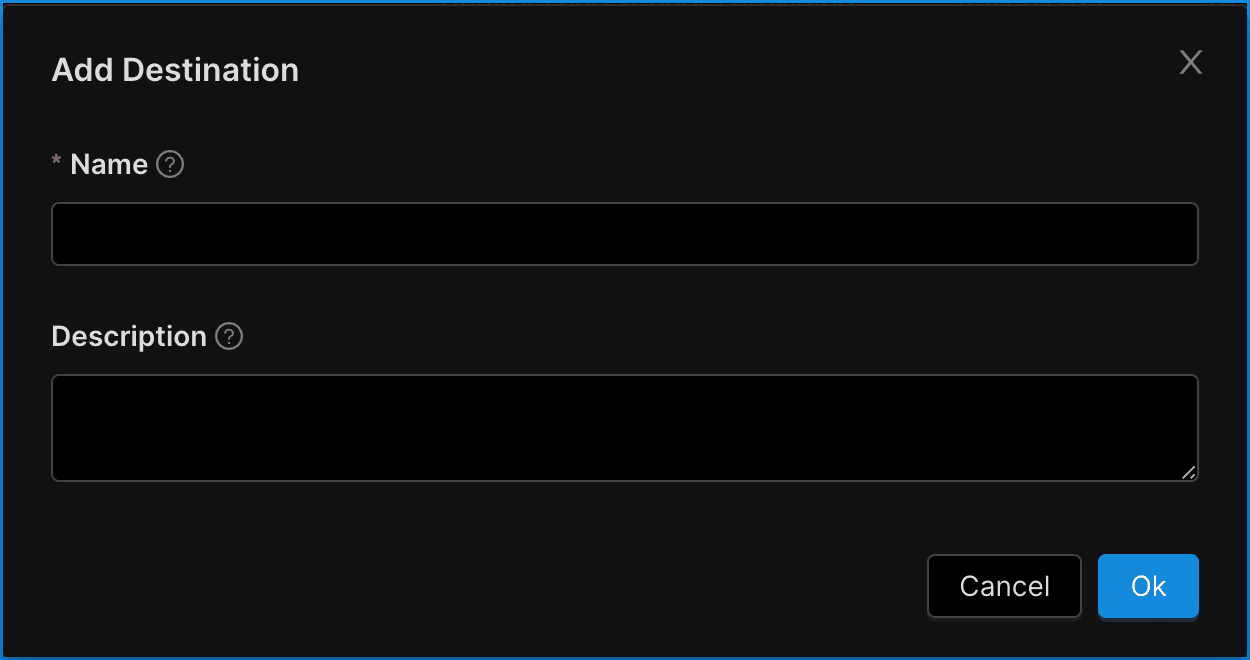Data Mapping
Managing Data System Attributes
How to add, edit, and delete Data System attributes.
This article provides details on the types of Data System attributes that can be added or edited for use within Data Systems. The process for adding most attributes will be the same, so we will only walk through an example of adding a new Data System Destination. For more information on Data Systems, you can also review the following articles:
- To learn more about how Data Systems work, refer to this article: Data Mapping Overview
- For details on how to add a new Data System, refer to this article: Adding Data Systems
Data System Attribute Types
We currently support adding or editing the following types of attributes:
- Relationships: Relationship is for identifying the relationship of this data system in regards to your company. While you can add your own custom options as well, in most cases this will be set to one of the following predefined options:
- Controller: Legal or natural person, an agency, a public authority, or any other body who, alone or when joined with others, determines the purposes of any personal data and the means of processing it.
- Joint Controller: Two or more data controllers that jointly decide why and how to process personal data.
- Processor: Legal or a natural person, agency, public authority, or any other body who processes personal data on behalf of a data controller.
- Sub-Processor: Third party data processor engaged by a Data Processor who has or will have access to or process personal data from a Data Controller.
- Origins: Where does the data from the data system originates from. Predefined options include: Legacy Data Systems, 3rd Party Data Provider(s), Integrated Data System(s), Built-In Data Collection, and User Submitted Forms.
- Destinations: Where the data is sent to and who the data is shared with. Predefined options include: Data Partners, Payment Processors, Analytics Providers, Security & Fraud Vendors, Auditors & Compliance Vendors, Researchers & Academic Institutions, Law Enforcement & Government, and Advertisers & Advertising Platforms.
- Processing Purposes: What the data in this system is used for. Predefined options include: Business Operations, Sales & Account Management, Customer Support, Security & Fraud, Analytics, and Advertising.
- Processing Activities: The activities associated with the data in this system. Predefined options include: Human Resources & Employee Development, Event Registration & Attendance, Loyalty Program, Consent Management, Personalization, Customer Lifecycle Management, Lead Generation & Management, Billing, Business & Customer Intelligence, and Marketing Automation.
- Personal Data Categories: The types of personal data that are stored in the data system. Predefined options include: Military Status, Location, Demographics, Business/Company, Employment, Education, Device, IP Address, User Generated Content, and Credit/Payment Card Number.
- Security Measures: The security measures that are in place to protect the data in this system. Predefined options include: Reviews & Audits, Training & Awareness, Risk Management, Information Security Program, ISO 27001 Compliance, SOC 2 Compliance, and Multi-Factor Authentication.
- Contacts: The contacts at your company or other companies associated with this data system. In addition to the predefined options, you are able to create custom attribute types for all of the above categories.
Example: Adding a New Data System Destination
- Click on the Data Mapping drop-down menu, choose Attributes.

-
Navigate to the Destinations tab. From here you can add, edit, and delete your Destinations.
-
Click the Add Destination tab in the upper right corner of the page.

- Give the destination a Name (required) and Description (optional) and Click OK.

Note: Destinations can also be added directly from the Data System wizard or when editing a Data System.